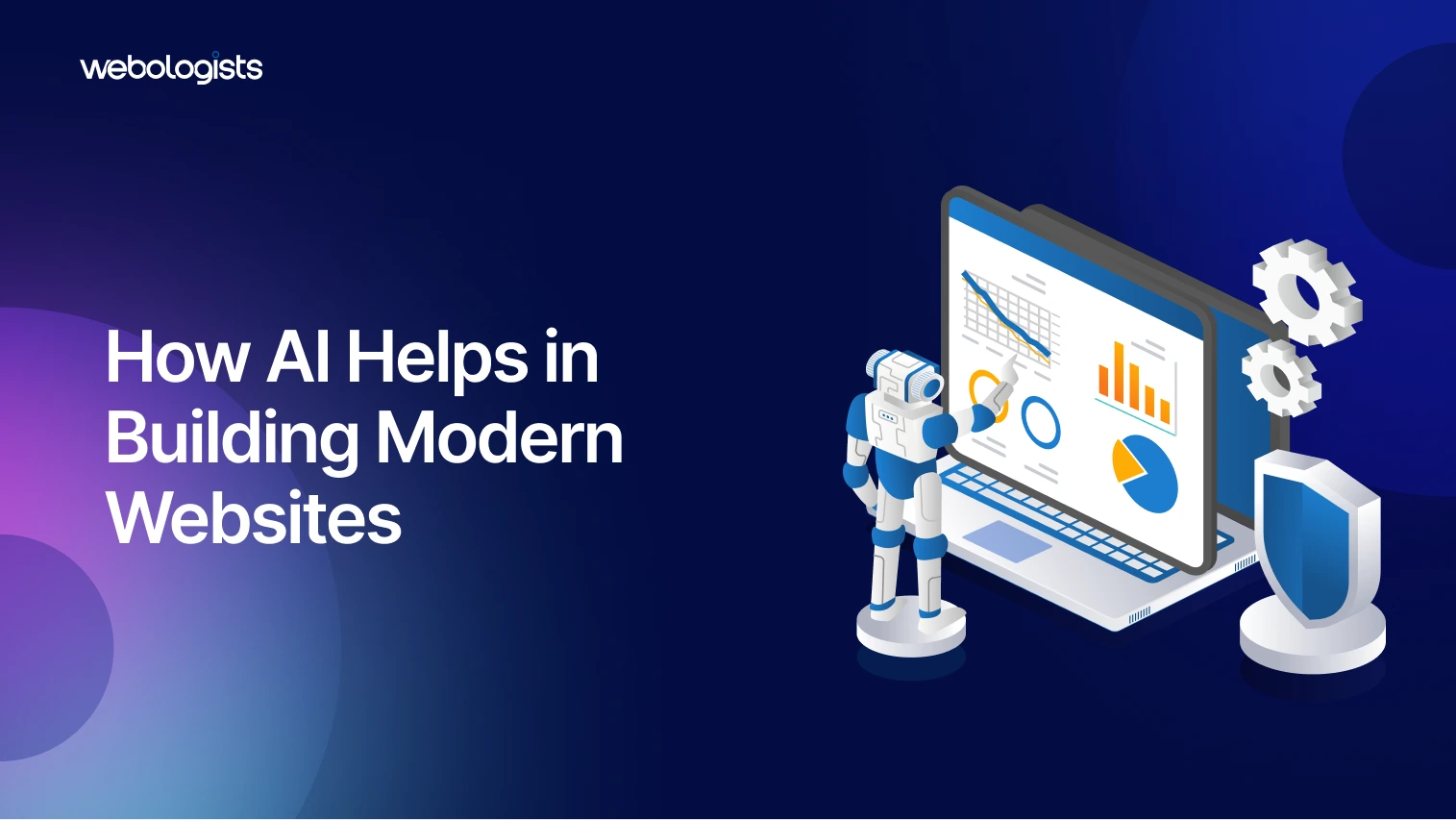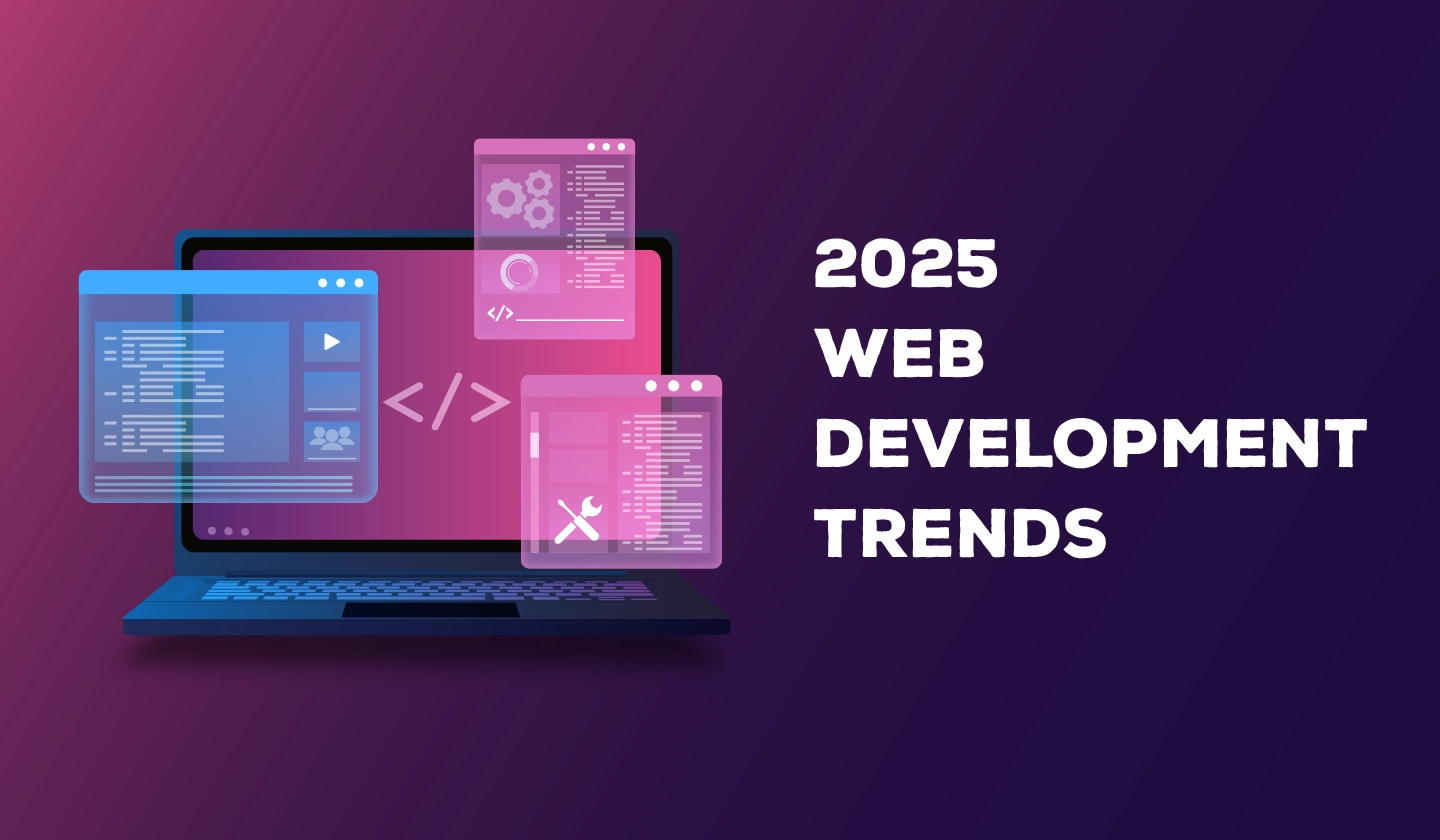
As we step into 2025, businesses and developers must embrace the latest innovations to stay competitive and deliver seamless online experiences. With advancements in technology and shifting user expectations, web development is undergoing a transformation that prioritizes efficiency, engagement, and seamless user experiences.
By understanding and leveraging the latest trends, businesses and developers can create future-ready websites that stand out in a crowded online landscape. Let’s explore the top web development trends shaping 2025.
Table of Contents
- 1 1. AI in Web Development: Smarter Websites, Better Experiences
- 2 2. Progressive Web Apps (PWAs): The Best of Both Worlds
- 3 3. Responsive Web Design: A Must-Have in 2025
- 4 4. Voice Search Optimization: The Rise of Conversational Browsing
- 5 5. Motion UI: Elevating User Engagement
- 6 6. Single Page Applications (SPAs): Speed and Efficiency
- 7 7. Enhanced Cybersecurity: Protecting User Data
- 8 8. Web3 Technologies: The Decentralized Internet
- 9 9. Low-Code and No-Code Development: Empowering Innovation
- 10 10. Intelligent Development Environments: Smarter Coding
- 11 Final Thoughts
1. AI in Web Development: Smarter Websites, Better Experiences
Artificial Intelligence (AI) is transforming how websites function, making them more intuitive and user-friendly. AI-powered chatbots provide real-time customer support, while personalized content recommendations enhance user engagement. AI-driven development tools like GitHub Copilot are also streamlining coding processes, helping developers work smarter and faster.
Moreover, AI is playing a critical role in accessibility, enabling voice commands, automated content generation, and personalized interfaces based on user preferences. Businesses leveraging AI can provide more interactive and engaging digital experiences while reducing development overhead. In addition, AI-driven analytics tools help businesses track user behavior, optimize website design, and improve performance.
Read more about AI in Web Development.
2. Progressive Web Apps (PWAs): The Best of Both Worlds
PWAs combine the advantages of mobile apps and traditional websites. They offer faster load times, offline access, and an app-like experience—without requiring downloads from an app store. As more users demand seamless browsing experiences, PWAs are set to become a standard feature in modern web development.
Unlike traditional websites, PWAs leverage modern APIs to deliver enhanced capabilities, such as push notifications and background updates. They offer improved security and reduce dependency on slow-loading web pages. Businesses investing in PWAs can benefit from increased user retention and higher engagement rates, particularly for e-commerce and content-driven websites.
Read more about Progressive Web Apps.
3. Responsive Web Design: A Must-Have in 2025
With internet access spanning across various devices, responsive web design remains crucial. Websites must adapt to different screen sizes, ensuring a smooth and consistent user experience. Techniques like flexible images, fluid grids, and media queries help achieve this adaptability, making websites more accessible for all users.
In 2025, responsive design is not just about adjusting screen sizes but also optimizing load times, ensuring touch-friendly interfaces, and integrating dark mode preferences. With Google’s mobile-first indexing approach, having a responsive website is no longer an option—it’s a necessity for SEO and user experience.
Read more about Responsive Web Design.
4. Voice Search Optimization: The Rise of Conversational Browsing
Voice search is growing in popularity, thanks to smart assistants like Siri and Alexa. To stay relevant, websites must optimize for voice search by incorporating natural language keywords and conversational content. This trend enhances accessibility and helps businesses capture more organic traffic.
Optimizing for voice search involves structuring content with featured snippets, implementing schema markup, and improving site speed. Businesses that focus on answering user queries in a clear, concise manner will rank higher in voice search results. Moreover, voice commerce is expected to rise, influencing how e-commerce websites are designed and structured.
Read more on Voice Search Optimization.
5. Motion UI: Elevating User Engagement
Motion UI adds dynamic elements to websites, making them more interactive and visually appealing. Smooth animations, transitions, and micro-interactions improve navigation and highlight key content. Thoughtfully implemented motion design keeps users engaged while enhancing the overall browsing experience.
Rather than overwhelming users with excessive animations, designers are incorporating subtle motion elements to guide attention, provide feedback, and create intuitive user flows. For example, hover effects, scrolling animations, and loading indicators improve user interaction without distracting from the content.
Read more on Motion UI.
6. Single Page Applications (SPAs): Speed and Efficiency
SPAs are changing how users interact with websites by loading a single HTML page and dynamically updating content without full reloads. Frameworks like React and Angular power these applications, providing faster, smoother, and more efficient browsing experiences. Expect SPAs to dominate web development in 2025.
SPAs eliminate unnecessary page reloads, resulting in a fluid, app-like user experience. They are particularly beneficial for platforms like dashboards, e-commerce stores, and SaaS applications. By reducing server load and enhancing performance, SPAs improve customer satisfaction and engagement levels.
Read more about Single Page Applications.
7. Enhanced Cybersecurity: Protecting User Data
With rising cyber threats, businesses must prioritize website security. Implementing encryption, multi-factor authentication, and regular security updates can prevent data breaches and build user trust. Cybersecurity will remain a top priority for developers aiming to create secure and reliable websites.
Additionally, compliance with data privacy regulations like GDPR and CCPA is becoming more critical. Developers are focusing on secure coding practices, endpoint protection, and AI-driven threat detection systems to prevent attacks. Websites with strong security measures will enjoy improved credibility and user trust.
Read more about Enhanced Cybersecurity.
8. Web3 Technologies: The Decentralized Internet
Web3 is introducing decentralized applications (dApps) and blockchain-based solutions, giving users more control over their data. Industries like finance, gaming, and content creation are already exploring the potential of Web3 technologies. This shift towards a more transparent and user-centric web is expected to gain traction in 2025.
Web3 applications rely on blockchain to enhance security, enable peer-to-peer transactions, and eliminate middlemen. Businesses leveraging smart contracts, decentralized identity management, and NFT integrations will redefine online interactions. As adoption increases, traditional web development approaches will evolve to accommodate decentralized protocols.
Read more about Web3 Technologies.
9. Low-Code and No-Code Development: Empowering Innovation
Low-code and no-code platforms are making website development accessible to a wider audience. These tools allow businesses to create functional websites without extensive coding knowledge, reducing development time and costs. As demand for quick solutions grows, these platforms will continue to gain popularity.
Startups and small businesses benefit the most from these platforms, as they enable rapid prototyping and cost-effective development. By integrating drag-and-drop interfaces, AI-driven automation, and customizable templates, no-code solutions are democratizing web development for non-technical users.
Read more about Low-Code and No-Code Development.
10. Intelligent Development Environments: Smarter Coding
AI-powered development environments are optimizing coding practices by automating repetitive tasks and suggesting code improvements. Tools like AI-driven code completion enhance productivity and reduce errors, allowing developers to focus on more complex problem-solving.
AI-assisted development environments reduce debugging time, improve code efficiency, and minimize human errors. Developers using these tools can accelerate project timelines and maintain high-quality code. As AI continues to evolve, these tools will become indispensable for modern web development.
Read more about Intelligent Development Environments.
Final Thoughts
Embracing these trends in web development can help businesses stay competitive and enhance user experiences. From AI-driven innovations to secure and decentralized web solutions, the future of web development is exciting and full of possibilities.
Looking to build a modern and future-proof web application? Partner with a web app development company that understands the latest industry trends and can bring your vision to life.




